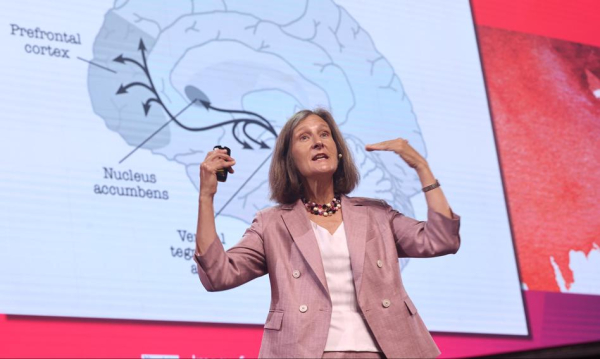Digital media trigger very strong reactions in our brain. They stimulate the same reward mechanisms as drugs and alcohol. Therefore, people who are particularly susceptible and use these media are at risk of developing addiction, American psychiatrist and bestselling author Anna Lembke told PAP.

“It’s worth emphasizing that when I use the word ‘addiction,’ I mean a form of psychopathology, i.e. compulsive, uncontrolled use of a substance or indulging in certain behaviors despite harmful consequences. I’m not talking about a bad habit or even risky use,” said Lembke, who is attending the Impact congress in Poznań.
She added that most of us will be able to self-regulate. However, some people who use online media are at risk of “serious digital media disorder.” She said, “It’s hard to estimate today what percentage of people will develop a digital media addiction. I think it will be similar to what we see for substance addictions—about 10 to 20 percent of the population. That’s the estimated rate of alcohol and drug addiction, and I think it will be similar with digital media.”
“We live in a time when people are much more susceptible to addiction because many everyday experiences have been, figuratively speaking, ‘ drugged ‘ . The food industry has added salt, fats, sugar and flavour enhancers to food. Social relationships have been ‘drugged’ by social media. Gaming has been similar. Shopping has been too. As a result, more and more people will be at risk of addiction because we are simply dealing with more ‘drugs’,” Lembke said.
At the same time, she noted that culture has a huge impact on how we approach addiction. “If a given society sees addiction as a brain disease, it is much less likely to stigmatize addicts and more willing to invest in creating a treatment system. On the other hand, if addiction is stigmatized, people suffering will withdraw, hide and be less likely to seek help,” she explained.
“It all depends on the type of addiction. For example, video game addiction – the so-called gaming disorder – was first recognized in China. It was there that the first steps were taken to recognize it at the governmental level, in the World Health Organization, and also in the ICD-11 classification. It was also in China that the first treatment centers for gaming addiction were established. Probably because the alarming signs of addiction in children were noticed very early,” Lembke said.
“Meanwhile, in the United States, we are much further behind in recognizing digital addictions, including video game addictions. On the other hand, the US has a much better infrastructure for treating alcohol and drug addictions than many Asian countries,” the psychiatrist said.
“We need to realize that children and teenagers are a group that is particularly susceptible to the effects of digital media. We need to think about protecting their developing brains,” the PAP interviewee noted.
“That’s why I think smartphones should be banned from schools, especially in grades K-12, the early stages of education. It’s about giving kids the freedom to learn and teachers the freedom to teach without distractions. Kids shouldn’t be walking around school with a ‘drug’ in their pocket,” Lembke said.
“I recommend that families give their children their own devices as late as possible. It’s better to reach for the simplest phone and control what your child does online. We also need systemic solutions – legislation that will introduce more security: age verification, changes in algorithms and design elements that make digital media so addictive today,” she concluded, adding that “of course, not everything will work perfectly, but we have to do something.”
Wojciech Łobodziński (PAP)
wal/ jos/ mhr/